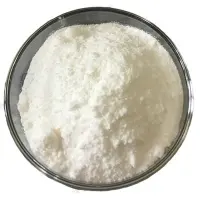-
Categories
-
Pharmaceutical Intermediates
-
Active Pharmaceutical Ingredients
-
Food Additives
- Industrial Coatings
- Agrochemicals
- Dyes and Pigments
- Surfactant
- Flavors and Fragrances
- Chemical Reagents
- Catalyst and Auxiliary
- Natural Products
- Inorganic Chemistry
-
Organic Chemistry
-
Biochemical Engineering
- Analytical Chemistry
-
Cosmetic Ingredient
- Water Treatment Chemical
-
Pharmaceutical Intermediates
Promotion
ECHEMI Mall
Wholesale
Weekly Price
Exhibition
News
-
Trade Service
Melatonin is a hormone that is produced by the pineal gland in the brain.
It is responsible for regulating sleep and wakefulness, and it helps to control the body's circadian rhythm.
Melatonin can be synthesized in the laboratory, and it is often used as a dietary supplement to help people sleep.
The production process for melatonin involves several steps, including the synthesis of tryptophan, the conversion of tryptophan to serotonin, and the conversion of serotonin to melatonin.
The synthesis of tryptophan is the first step in the production of melatonin.
Tryptophan is an essential amino acid that is found in many protein-rich foods, such as meat, eggs, and dairy products.
It is also available as a dietary supplement.
Tryptophan is synthesized in the laboratory using a bacteria or yeast, which are fermented to produce the amino acid.
Once the tryptophan has been synthesized, it is converted to serotonin in the next step of the production process.
Serotonin is a neurotransmitter that is responsible for regulating mood, appetite, and sleep.
It is produced in the brain and in the intestines, and it is also available as a dietary supplement.
To convert tryptophan to serotonin, the tryptophan molecule is first converted to 5-hydroxytryptophan (5-HTP) using an enzyme called tryptophan hydroxylase.
The 5-HTP is then converted to serotonin using another enzyme called 5-HTP decarboxylase.
The final step in the production of melatonin is the conversion of serotonin to melatonin.
This process is carried out in the pineal gland in the brain, where serotonin is converted to melatonin by the enzyme tryptophan hydroxylase.
Melatonin is then released into the bloodstream, where it helps to regulate the body's circadian rhythm and promote sleep.
The production process for melatonin involves several steps, including the synthesis of trypt







